China's Luxury Cars: A Generational Leap in Technology Targeting BBA
![]() 02/24 2025
02/24 2025
![]() 379
379
When Yu Chengdong, known for his restrained statements, announced "a milestone in China's smart auto industry" at the Zenith S800 launch event, the audience erupted in applause.
However, what truly shook the industry was the technological awakening represented by this launch. It signals that China's auto industry has completed the final piece of the puzzle for smart cars—the "intelligent motion mechanism." This innovation unblocks the traditional constraints of cars, transforming them into specialized robots dedicated to mobile travel services.
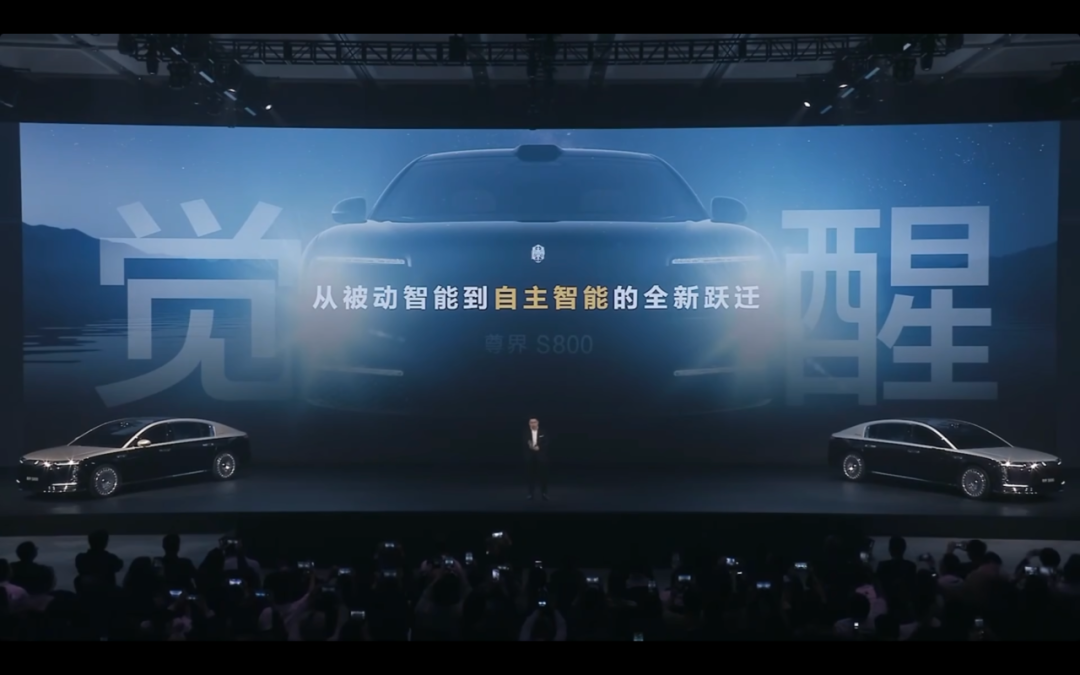
Traditional electromechanical luxury has been surpassed, and new intelligent luxury has arrived.
European and American luxury auto giants BBA, along with their suppliers Bosch, Continental, and ZF, are now in a state of panic. This is not just a generational shift; it's a paradigm shift.
I. Intelligent Hardware: Leveraging "Redundant Design" to Elevate Configuration
Traditional luxury cars' core competitiveness lies in their engines, chassis, and craftsmanship. However, Zenith S800 aims to redefine the "luxury" threshold through an abundance of sensors and computing power, coupled with smart motors.
At the sensor level, it boasts a total of 32 sensors in a 4L11V5R12U configuration.
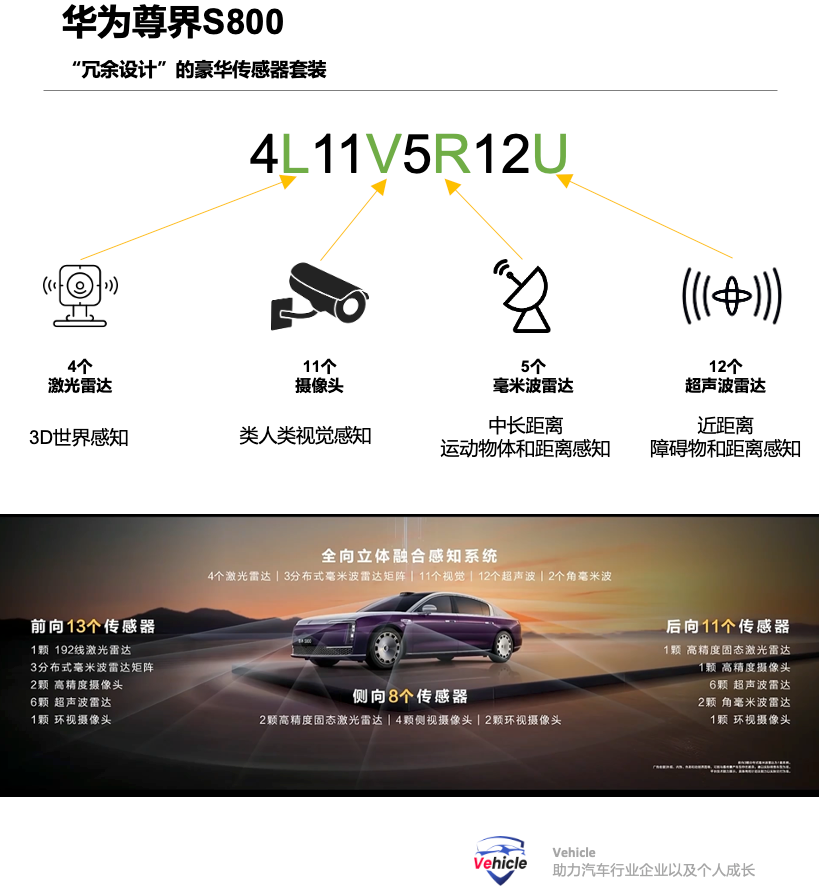
Among its four lidar sensors, the forward main lidar boasts up to 192 lines (compared to Mercedes-Benz DRIVEPILOT's 128 lines), with a detection distance of 250 meters (Mercedes-Benz's is 150 meters). Crucially, the solid-state lidar on the sides and rear is akin to deploying a "3D scanner" around the car, enabling real-time environmental modeling with centimeter-level accuracy.
There are 11 cameras, undoubtedly a Huawei platform configuration. For more details, refer to our previous article, "Huawei's Leading Intelligent Driving Hardware and the GOD and RCR Algorithms Behind It." It includes a narrow-field but long-range camera for forward vision, a binocular camera with wide-field but short-range vision, two surround-view cameras on each side (front and rear), four fisheye cameras for panoramic view, and one rear-view camera.
There are five millimeter-wave radars, including three distributed millimeter-wave radar matrices facing forward. As mentioned in our article "CES 2024 - How Chip Giants Will Transform Cars," these radars facilitate signal transmission and reception, processed by a single chip for easy deployment and upgrading. They enable vertical perception and better handling of cut-in and ghost probe scenarios, similar to the millimeter-wave radar used by BYD, discussed in "BYD's Intelligent Driving Dream: Can 'Smart Cars' Really Become Popular by 2025?"

The two rear corner radars serve more traditional functions, primarily for side collision avoidance like DOW and LCA.
This sensor configuration is the epitome of luxury, taking a distinct path from Tesla's pure vision approach. It employs sensor redundancy, using lidar for direct ranging rather than relying solely on vision algorithms for occupancy calculation. For an explanation of BEV and Occupancy, refer to "Intelligent Driving - BEV and Occupancy Networks Essential for Urban Navigation Assistance."
Huawei's lidar-based approach to constructing the 3D world has lower computational and algorithmic requirements while providing precise measurements and overcoming visual challenges like darkness and heavy fog.
As a result, Huawei's Zenith S800's "road preview" function achieves high-resolution, all-weather, and full-scene capabilities.
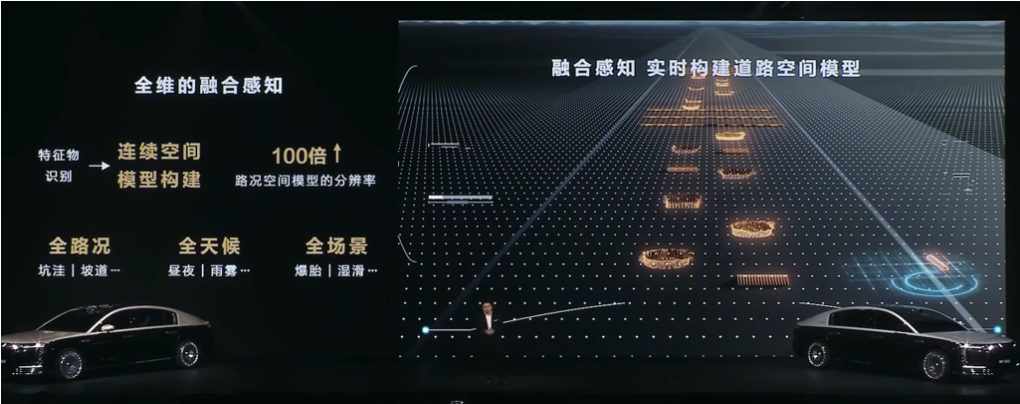
In comparison, BYD's "road preview" function, using binocular cameras known as the "Divine Eye," is a lower-end version, compromising on accuracy and all-weather performance.
Furthermore, Huawei's use of four lidar sensors allows its three side and rear lidar sensors to scan and construct the surrounding environment at low speeds, avoiding overhead obstacles and enabling high-precision parking scenarios, such as precise positioning for wireless charging.
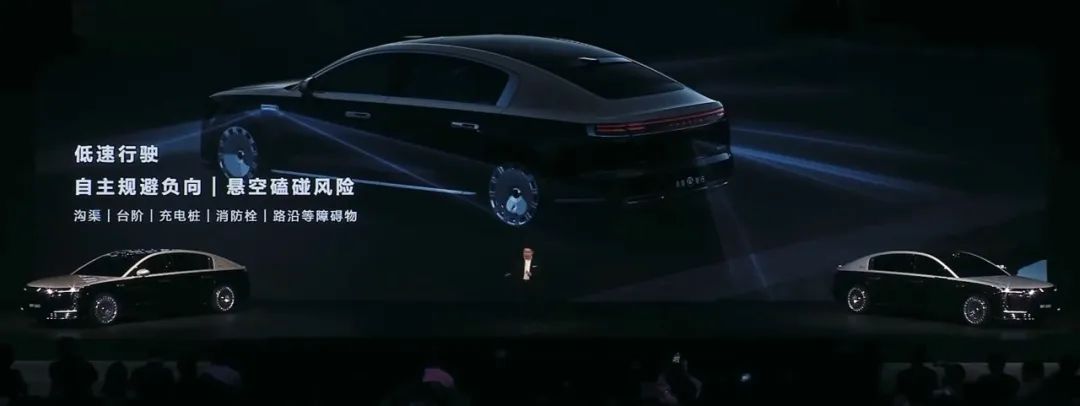
Thus, Huawei's redundant sensor configuration solution pushes the envelope, making Zenith S800 a dedicated series of travel robots.
II. Intelligent Electric Actuator: Utilizing "Central Intelligence" to Disrupt Luxury Cars
While traditional luxury cars rely on skilled engineers and their accumulated tuning experience, Zenith S800 employs digital and electronic 010101 codes combined with intelligent control to form a closed loop, disrupting the status quo of luxury cars.
Huawei names its intelligent electric actuators, which encompass the car's chassis and drive system, the "Huawei Tunling Longxing Platform."
It supports dual-motor, triple-motor, and quad-motor configurations, outputting between 480 and 1300+ horsepower. Operating voltages support 800V and 900V, adaptable to sedans, SUVs, and MPVs with a full load mass of 3.0-3.8 tons.
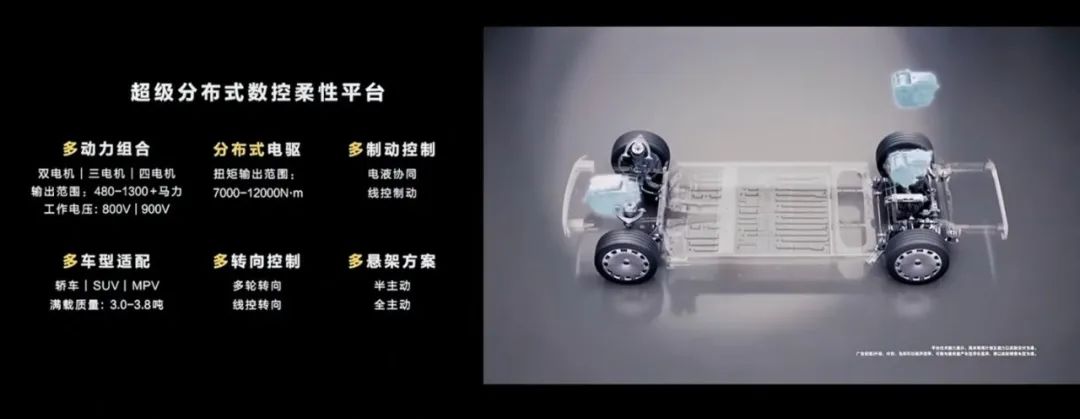
These motor drivers and suspension actuators, akin to CDC and other electronically controlled suspension actuators, are controlled via a centralized controller.
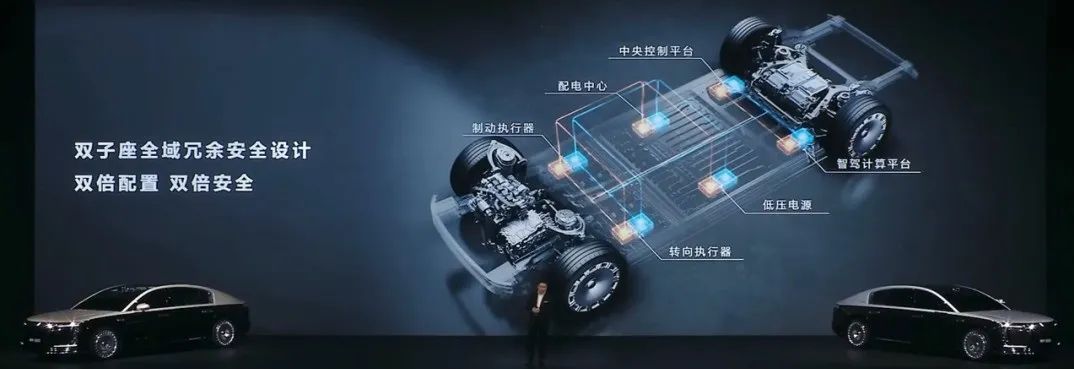
In contrast, traditional German luxury carmakers BBA rely on actuators and controllers from Bosch, Continental, and ZF, respectively. These systems lack synchronization, centralized control, or overall intelligence.
Here, German luxury brands and their T1 supply chain lag behind Chinese giants Huawei and BYD, who leverage economies of scale to complete China's auto industry's final smart car puzzle—the intelligent motion architecture (chassis and drive intelligent electric actuators).
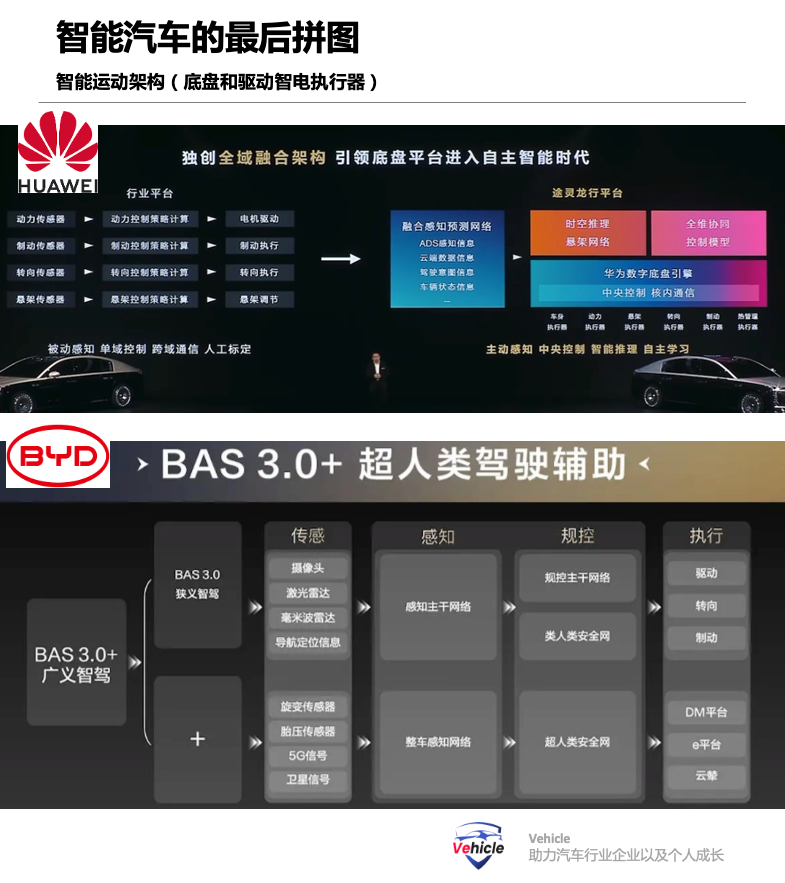
At a luxury carmaker where Jack once worked, the fully automatic chassis utilized ZF technology. It transmitted ADAS map road information to the chassis actuator, adjusting the suspension for comfort based on road slope and curvature.
Now, with real-time high-precision 3D perception and a centralized controller coordinating chassis and drive intelligent electric actuators, it achieves synchronized space-time understanding in driving conditions. Coupled with electric drive actuators' faster response time compared to hydraulic actuators, features like "no dust on white sand," "no broken glass," and "no traces in water" are merely digital era character conversions of 010101.
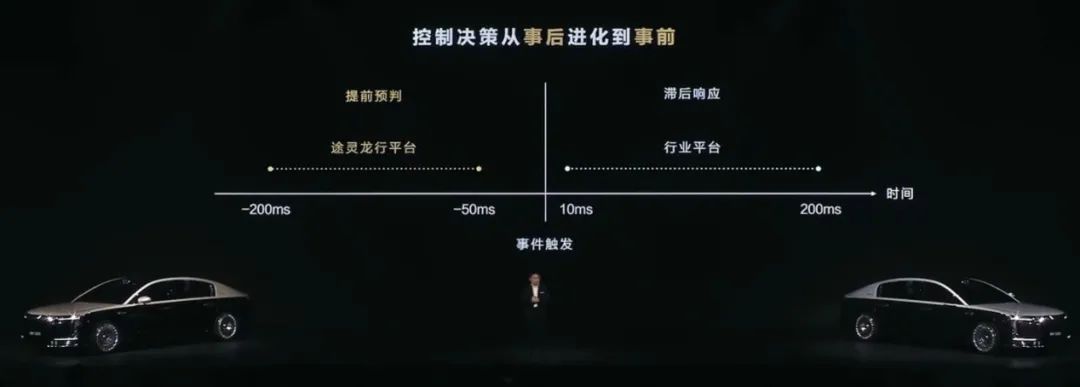
Compared to traditional luxury carmakers' active chassis control methods, Huawei's technology announced today is akin to the difference between a 30-megapixel and a 12-megapixel camera.
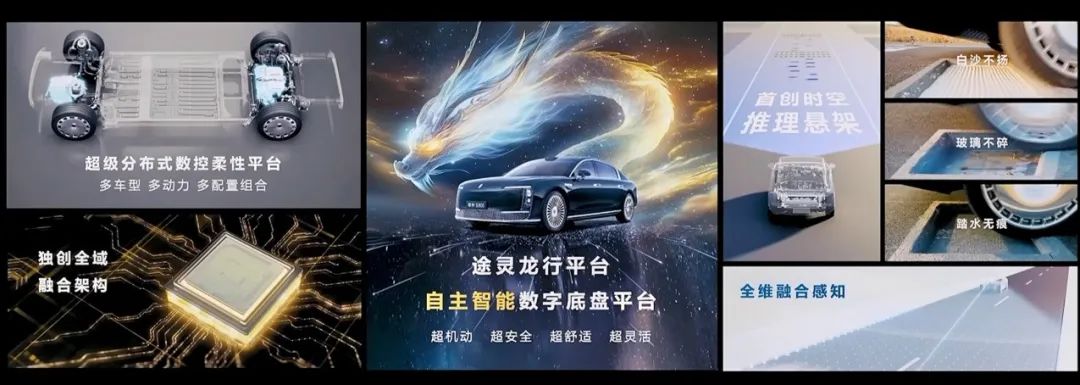
For manufacturing powerhouse China, the transition from hydraulic to electric chassis actuators can happen swiftly.
Battery Charging System: China's automotive electrification is nearing completion. The 800V high-voltage platform combined with 6C charging allows a 65kWh battery to recharge 70% in 10 minutes, equivalent to "1 minute of charging for 60 kilometers of range." This addresses luxury car users' core pain point—recharging anxiety.
Photovoltaic System: Intelligent light curtain glass. Traditional luxury cars require manual adjustment for color-changing sunroofs. However, Zenith S800, integrating camera and lidar data, automatically recognizes sunlight intensity, reflections from buildings, and even passersby's gaze angles, dynamically adjusting light transmittance. Yu Chengdong joked during the demonstration, "Film shop owners will go out of business in the future."
Intelligent headlights, akin to high-brightness projectors from cinemas, combined with intelligent driving, offer numerous playful possibilities.
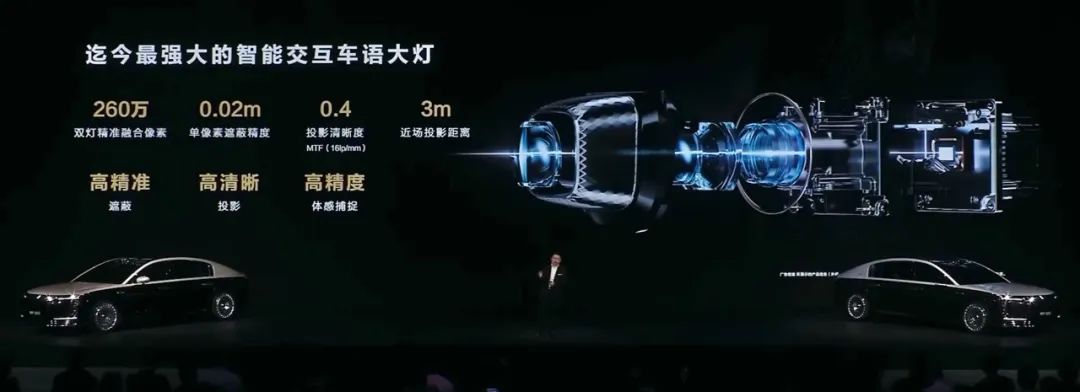
III. User Perception: Reinventing the "Third Space"
Features like DeepSeek integration and large language model-based voice control are standard for China's smart cars. While BBA emphasizes "first-class seats," Huawei's Zenith S800 has transformed the interior space into an evolvable digital ecology with HarmonyOS ALPS Cabin 2.0.
Three details reveal this transformation:
Olfactory Management: The double-layer air circulation system identifies 200 types of odor molecules, automatically activating purification when pets enter.
Emotional Resonance: Through facial recognition and heart rate monitoring, it triggers seat vibrations, fragrance release, and upbeat music playback when the driver is fatigued.
Sky-ground Interconnection: The combination of dual-network standby and satellite communication maintains a signal even in uninhabited areas. Yu Chengdong calls it a "never-disappearing mobile base station."
The essence of these functions is transferring intelligence's ecological integration capabilities to the automotive scenario, connecting cabin sensors with the central computing power. Wang Jun, a senior executive at Huawei's Consumer BG, revealed, "In the future, the HarmonyOS cabin will invoke mobile phone AI large models for cross-device scenario intelligence."
IV. The Second Half of the Luxury Car War: From Parameter Competition to Ecological War
Huawei's Zenith S800 and BYD's Youwang (priced at 1 million to 1.5 million yuan) and NIO ET9 (in the 800,000 yuan range) are priced slightly lower or equivalent to foreign luxury cars over 2 million yuan. This positioning underscores China's luxury cars' ambition—to compete for traditional luxury car users' "consumption upgrade" demand with generational technological differences.
However, the more profound impact lies in the ecological layout. For instance, through SparkLink communication, HarmonyOS in-car systems, and HUAWEI DriveONE electric drives, Huawei is building a closed-loop "vehicle-road-cloud" system. An industry insider commented, "While others compete on lidar sensor count, Huawei is already laying the groundwork for the next decade."
BYD is also building its ecological layout through vertical integration.
Luxury brands like BBA, clinging to traditional models, neither adapt to changing consumer demand nor drive supply chain innovation with centralized thinking. They risk being left behind, creating an insurmountable generational gap if they don't awaken and transform in time.
Conclusion
The emergence of Huawei's Zenith S800 and BYD's Yi Sanfang and Yi Sifang marks a new era for China's auto industry—shifting from electrification disruption to intelligence defining luxury.
As four lidar sensors scan Shanghai's Bund's neon lights and the HarmonyOS cabin connects to satellite signals on the Qinghai-Tibet Plateau, Huawei and BYD's "generational technology onslaught" may be rewriting the century-old automotive industry's power map.
As Yu Chengdong concluded at the launch event, "Today, we reinvent the wheel."
*Reproduction and excerpts are strictly prohibited without permission - Reference materials: By joining our knowledge planet, you can download a vast amount of first-hand materials in the automotive industry, including the above reference materials.








